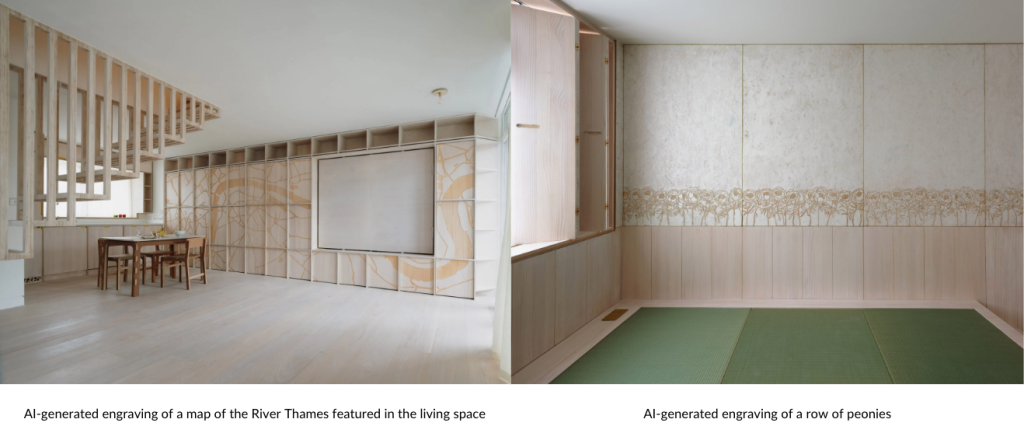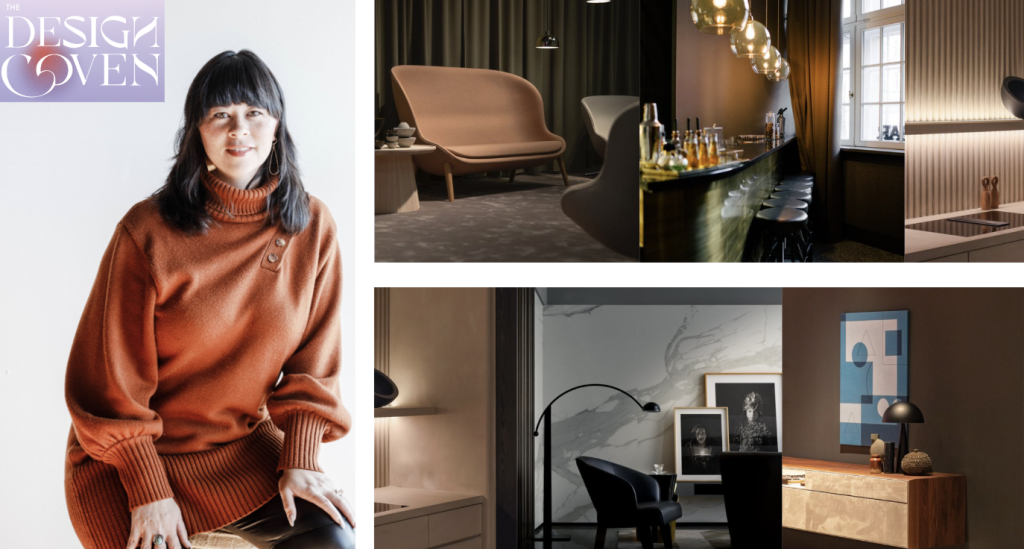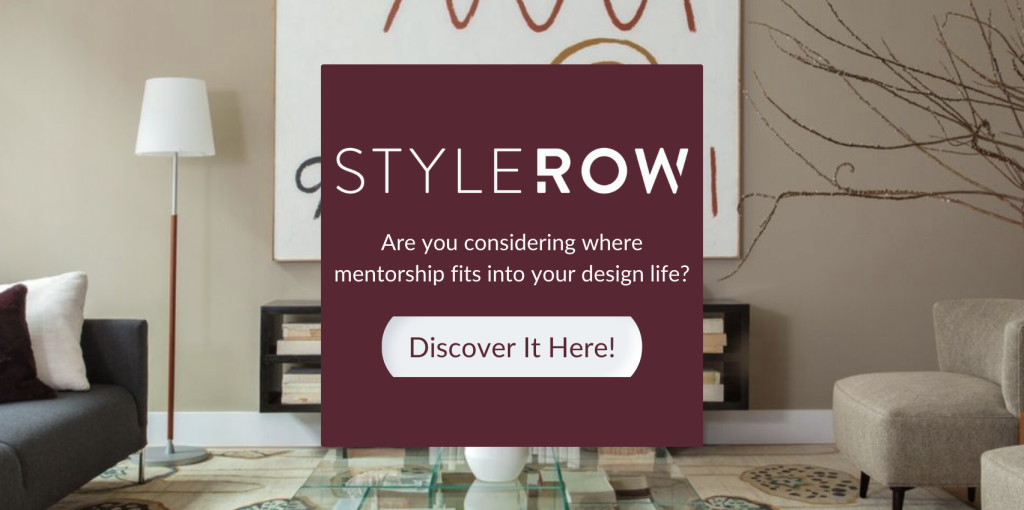In this edition, venture into the tech-infused design world and discover how AI can fit into your business!

3D Printing
Is 3D printing the future of design? That’s for you to decide. In the simplest terms, 3D printing is a method of materializing a three-dimensional object layer-by-layer using a digital blueprint. But here’s where the magic unfolds – design finds its playground in this realm. If you can imagine it, chances are you can use 3D printing to take it to its tangible form. You orchestrate every detail by choosing the color, design, size, and material. Plus, its use of eco-friendly materials is totally sustainable! You can also use 3D printing to create miniature versions of your ideas to truly bring your vision to life. If you find yourself stuck searching for the perfect lampshade to finish off a space, try printing one yourself!

AI and CNC Cutting
Tsuruta Architects, a UK-based studio, fearlessly fused AI and CNC (computer numerical control) cutting technology to create a symphony of bespoke designs and artwork for residential homes. Founder Taro Tsuruta ventured into AI after facing budget constraints in hiring a graphic designer. Through a series of experiments, the AI program DALL-E 2 transformed his ambitious ideas into material masterpieces. A seamless upload to the CNC router cemented the sketch and the designs were directly imprinted onto wooden boards. The convergence of these technologies has shattered the boundaries of creativity, opening up a realm where the possibilities truly do become endless so long as there is a creative mind steering the ship.

FabricGenie
Finally, an AI dedicated exclusively to captivating the world of interior design emerged. Behold, FabricGenie – an AI-powered textile tool ready to transform design prompts into mesmerizing custom patterns with working repeats. But, the true allure lies in the creative individuality of the inputter. Load FabricGenie with a prompt like “pink flowers against a white backdrop” and within minutes, a free pattern arrives via email. Satisfied? Order a swatch for $8 or $27 per square meter. Within a week, thousands requested patterns and swatches including the most comical pairing of [former British Prime Minister] Theresa May surrounded by cheese. This tech will soon enchant the mainstream, and as a designer, you can actualize your clients’ unique visions.

Zaha Hadid Analytics + Insights (ZHAI)
AI isn’t just stealing the spotlight in the world of interior design; architects are hopping on the bandwagon too! Enter ZHAI, the pioneering in-house team harnessing data and AI to craft intricate building plans. Post-pandemic, the corporate landscape craved a revolution waving goodbye to one-size-fits-all models. Embracing personalization, ZHAI began tracking both people and environmental cues with AI to create a design utopia. From seating arrangements that reinforce connections to strategic coffee shop placements and tailored lighting solutions, their AI-powered prowess knows no bounds. But that’s not all – using another tech, they can churn out 100,000 building plans in just 27 hours, a feat that would take an architect a decade of drawing 40 blueprints a day to match!
Tune In

Catch up with tech in the podcast space too! Design You is a no-BS guide to designing a life that is both fulfilling and successful, recently exploring the possibilities that tech and AI make realisitc in design. Thrive in Design unveils the secret to weaving tech into your design process, transforming your creative process into a sustainable, innovative masterpiece. Design:ED lends an inside look into architecture through the eyes and minds of industry leaders. Lastly, The Interior Design Consultant is packed with advice, creative inspiration, and savvy business strategies to help you conquer the design world.



















